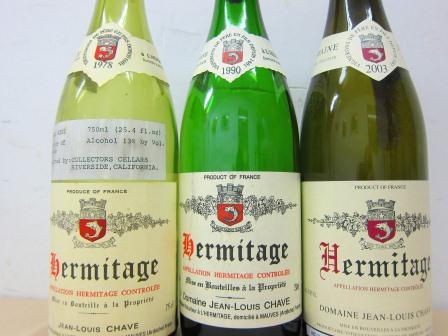1996 Domaine Jean-Louis Chave Hermitage Hermitage Rhône France Wine Tasting Note
8351 Views
|
Better on the earthy, red dark berry and spicy nose than on the medium bodied, slightly tart, firm palate. Air might improve this wine, but I doubt it. 3,969 Views Tasted Jan 17, 2016This elegantly styled Hermitage is open and ready for business. Soft, medium bodied, mature and delivering all of its fresh, spicy red berries and earth, this is not a Chave for long term aging. I liked the wine, but it clearly lacks the weight and density of the better vintages. 4,382 Views Tasted Nov 30, 2013 |

When to Drink JL Chave, Anticipated Maturity, Decanting Time
Domaine JL Chave is not a wine that can be enjoyed young The wine needs time, at least 10 years or more and needed before the wine becomes civilized. At that point, 1-3 hours of decanting are recommended to allow the wine to soften and open its perfume. Older vintages might need very little decanting, just enough to remove the sediment.
Domaine JL Chave is usually better with 10-15 of bottle age. Of course, that can vary slightly, depending on the vintage. In the best vintages, the wine should be consumed within 15-45 years after the vintage.
Serving JL Chave with Wine, Food, Pairing Tips
JL Chave is best served at 15.5 degrees Celsius, 60 degrees Fahrenheit. The cool, almost cellar temperature gives the wine more freshness and lift.
Domaine JL Chave is best served with all types of classic meat dishes, veal, pork, beef, lamb, duck, game, roast chicken, roasted, braised, barbecued, and grilled dishes as well as smoked meats. Domaine JL Chave is also good with Asian dishes, and hearty fish courses like tuna, mushrooms, cheese, and pasta.
The white wine of Domaine JL Chave is best served with a myriad of different seafood dishes, shellfish, crab, lobster, sushi, sashimi, chicken, pork, and veal, as well as Asian cuisine.

